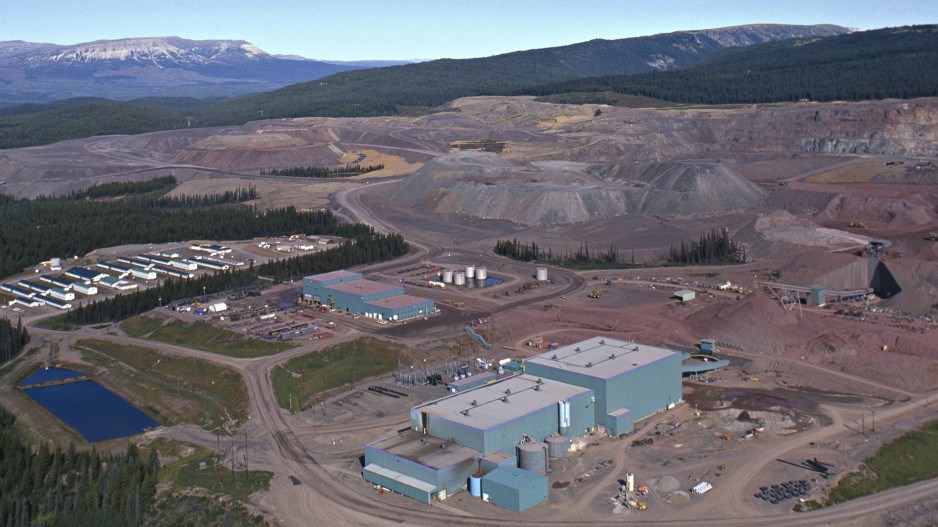A rising tide of investor confidence in mining is lifting Canadian junior mining companies left mired by four years of a brutal bear market.
Just last week, Centerra Gold (TSX:CG) announced a $310 million friendly takeover bid for AuRico Metals (TSX:AMI) – the primary target being AuRico’s Kemess gold-copper mine 250 kilometres north of Smithers, B.C.
And Barkerville Gold Mines (TSX-V:BGM) – once something of a laughingstock – has pulled off a stunning turnaround and may end up having the last laugh.
Barkerville has jumped to fourth place on a recent PwC analysis of the top 100 junior mining companies on the TSX Venture Exchange (TSX-V), after pulling in more than $90 million in equity raises and private placements, and the company plans to begin producing gold by the end of this year at its operations in the Cariboo.
Mergers, acquisitions and major financings between 2016 and 2017 indicate the junior mining and exploration sector is now well into a recovery.
According to PwC, $2.5 billion flowed into Canadian juniors in 2017. Of the top five on the PwC list, four are B.C. companies.
“This was the year we saw the cash come in,” said Liam Fitzgerald, mining leader for PwC. “Last year was mostly a market value story. This year, it’s more of a cash story, where over $2.5 billion poured into the sector on the junior exchange.”
The total market capitalization of the top 100 TSX-V mining companies increased 7% over 2016, from $11.4 billion to $12.2 billion, according to PwC.
Another indicator of the recovery comes from the third-quarter financials of Finning International Inc. (TSX:FTT), which reported a 21% increase in new equipment sales in the mining and construction sectors.
While traditional gold and copper companies continue to attract the bulk of new investment, the single largest amount raised in 2017 was secured not by a traditional metals company, but by a pure-play cobalt firm – Cobalt 27 Capital Corp. (TSX-V:KBLT) – which raised $200 million.
“Cobalt was the story of 2017, and lithium was last year,” Fitzgerald said.
The demand for lithium-ion batteries, particularly in electric vehicles, is driving investment in companies in the lithium and cobalt subsectors.
The last major mining cycle was a prolonged one, driven by growth in China and high commodity prices.
It peaked in 2011 along with gold prices, which topped out at around $1,900 per ounce before investment began drying up in the mining sector as a glut of commodities like copper pushed prices into a sustained trough.
Collectively, between 2012 and 2013, mining and exploration companies on the TSX Venture Exchange lost two-thirds of their value, Fitzgerald said.
Although investment is now flowing back into the mining and exploration sectors, companies are being more cautious with their spending, he said. While $2.5 billion in equity and debt offerings have flowed into Canadian juniors, they have spent only $1 billion on exploration and development.
“So they kept about $1.5 billion of that money on their balance sheet by the end of June. If you looked at it from the previous cycles, they would have burned through that cash much quicker.
“The companies are being more prudent. They are being more diligent about their projects.”
Part of the reason for that caution may be that, unlike in the past, when juniors with projects at or near the development stage could expect to be bought out by a major, companies like Barkerville are taking their mines into production themselves.
“A lot of these juniors now are realizing they need to line this up as if they’re going to operate,” Fitzgerald said. “Many are having to take seriously the fact that they have to bring these properties into production at some point. They can no longer sit on the project and hope that a major takes them out. The majors are happy to put equity placements in.”
For example, last year Osisko Mining Inc. (TSX:OSK) took a 17% stake in Barkerville. According to PwC, Barkerville has raised $56 million in equity and $38 million through a private placement. Barkerville now expects to be in full production in 2018.
That’s a remarkable turnaround, considering that between 2012 and 2013, the BC Securities Commission halted trading in Barkerville’s stock while it conducted an investigation into the former CEO’s claims about Barkerville’s potential gold reserves – claims that were not substantiated by technical reports.
The company was thrown a lifeline by investor Eric Sprott, who assumed Barkerville’s debt for a 41% stake. Later, Osisko came in for a 17% stake.
“So they were able to attract good interest from some of the more major players, and when you can attract interest from the major players … it then makes a more positive story,” Fitzgerald said. “If they’re able to give the market a positive story, more money flows in behind.”
Other B.C. success stories include Integra Gold Corp. (TSX-V:ICG), which was acquired in July by Eldorado Gold (TSX:ELD) for $590 million.
And Leagold Mining Corp. (TSX-V:LMC), founded last year, raised $175 million in March to finance the acquisition of a gold mine in Mexico from Goldcorp (TSX:G). B.C. mining magnate Frank Giustra is Leagold’s chairman.•
The Kemess operated as an open pit mine from 1998 and 2011; AuRico plans a new underground operation. | AuRico




